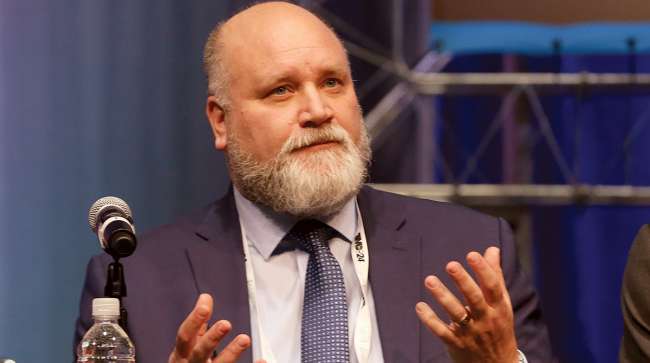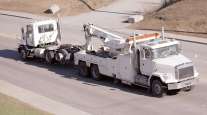Staff Reporter
Official Offers to Help Carriers on Side Underride Guards

[Stay on top of transportation news: Get TTNews in your inbox.]
NEW ORLEANS — A senior official at a federal agency offered to help carriers submit their comments, questions and quandaries related to the National Highway Traffic Safety Administration’s work on potentially rewriting regulations for trailer underride guards.
“If you are not confident about contacting NHTSA, contact me,” said Federal Motor Carrier Safety Administration vehicle and roadside operations division chief David Sutula.
Sutula — who spent over 16 years at NHTSA — offered to take up carriers’ concerns about the ongoing federal rulemaking process with counterparts at NHTSA, particularly if they were worried about anonymity.
“I’m happy to tell our friends over at NHTSA what they’ve got right or wrong,” he told a technical session during the 2024 Technology & Maintenance Council Annual Meeting and Transportation Technology Exhibition.

ATA Safety and Technology Policy Director Kevin Grove. (John Sommers II for Transport Topics)
FMCSA’s primary responsibility is prevention of commercial vehicle-related fatalities and injuries through the enforcement of safety regulations after NHTSA formulates those rules.
Underride guards are intended to prevent deaths and injuries to pedestrians, cyclists, motorcyclists and motorists by minimizing the chances of a vehicle traveling under a trailer in a collision. Revising recently updated rear underride guard rules and potentially introducing rules to add side underride guards to trailers — a highly controversial proposition that has been met with industry concern — are at the center of the debate, with industry balking at both the cost and perceived benefits.
In April 2023, NHTSA published an advanced notice of proposed rulemaking for side underride guards. It also published research on cost and benefits sought for comments. A specially appointed committee is now weighing the options in front of the agency.
Carriers expressed worries during the TMC 2024 technical session about the costs and intricacies of any proposed regulations, including whether the guards would do the job they were intended to do, how the guards would affect the amount of freight being carried and how to add both the side guards and increasingly ubiquitous side aero skirts to trailers.
Meghann Erhart of Relay Payments shares ways to prevent falling prey to fuel card skimming. Tune in above or by going to RoadSigns.ttnews.com.
Sutula said carriers needed to inform NHTSA of the side underride guards’ impact on the weight of freight they could carry, and make sure the agency worked with the Federal Highway Administration’s Office of Freight Management and Operations, which administers weights and measures coordination.
“The more cost data you can submit to them the better,” he said. Petitioners should make it clear how much trouble any potential design would cause them, said Sutula.
From FMCSA’s perspective, he said, NHTSA also needs to understand at what point the side underride guards must be replaced after being scraped or banged up.
Before that happens, said American Trucking Associations Safety and Technology Policy Director Kevin Grove, NHTSA must make sure that guard designs are tested and engineered adequately, take shippers’ loading docks into consideration, and also factor the impact of regular inspections of the guards, among other considerations.
Part of the reason for the caution is tied to initial NHTSA research that found the cost to the industry for side guards would be $1.2 billion per year, with $800 million of that to be spent on equipment and a further $200 million to $400 million spent on fuel due to the increased weight trailers would be carrying. That research also found that crashes are going underreported and that there currently are limited potential benefits and a lack of testing for the side guards.
Want more news? Listen to today's daily briefing above or go here for more info
NHTSA’s specially appointed committee began meeting on a monthly basis in February to consider the options, plus whether a 2022 rule on rear underride guards should be toughened up.
Lateral protection devices, as side underride guards are also known, have been mandatory in the U.K. since 1986, and the city of Boston introduced a mandate in 2017 for city-contracted vehicles. A bill requiring side underride guards was introduced in the California Senate in January by state Sen. Scott Wiener.
European regulators first introduced regulations for new trucks and trailers and later added rules for existing rolling stock.






